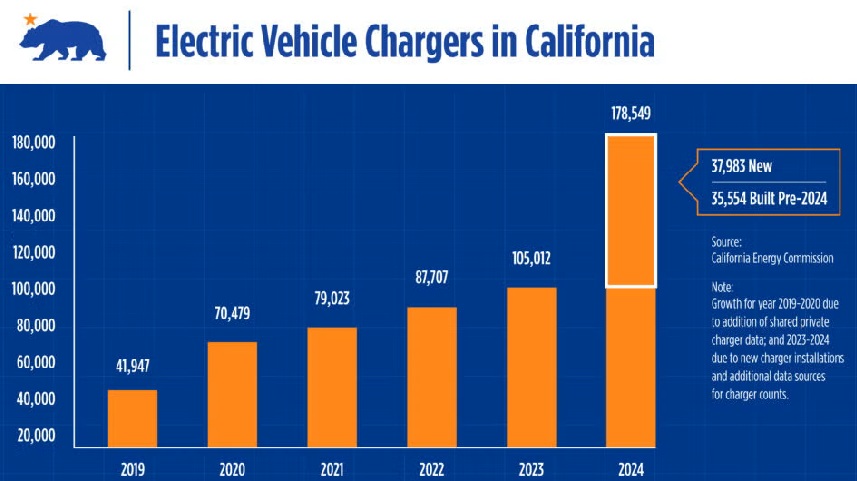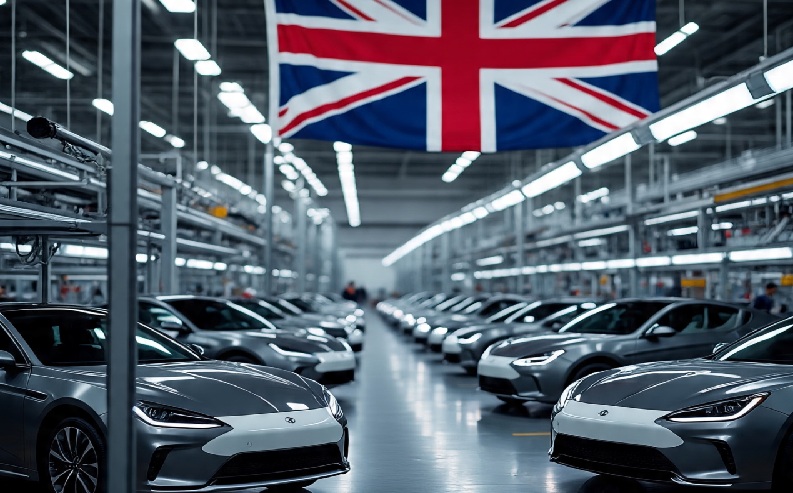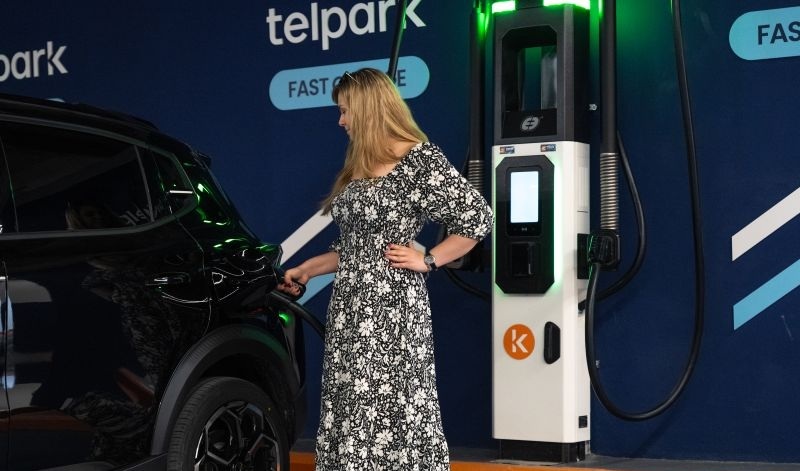California leads the way in electrifying the United States’ roads
According to a new memo released by the governor’s office, California’s electric vehicle (EV) chargers outnumber the state’s gas pumps by a considerable margin.
Last week, Governor Gavin Newsom announced that the state has now installed 178,549 public and shared private EV chargers across California.
The vast majority of public chargers in the state are Level 2 devices, which account for 162,000 plugs.
The remaining 16,500 are direct current (DC) fast-chargers.

In comparison, the California Energy Commission (CEC) estimates there are around 120,000 gas pumps in the state, meaning public EV chargers outnumber gas nozzles by nearly 50 percent.
The numbers become even more staggering when you bring home charging into the equation.
The CEC estimates there are roughly 700,000 Level 2 chargers installed at single-family homes throughout California.
The California Energy Commission also showed how the number of chargers has grown by leaps and bounds in recent years, with plans to improve EV infrastructure even more in the coming years.
In December 2024, the CEC approved a 1.4 billion dollars investment plan to expand both EV charging infrastructure and access to hydrogen fuel—though that could face challenges in light of the Trump administration’s attack on what the president calls the “EV mandate.”
Source: Car and Driver
READ MORE
-
UK updates eligibility criteria for the Electric Car Grant
The UK Government sets new technical and environmental requirements that manufacturers must meet for their electric vehicles to qualify for grants of up to £3,750.
-
Deftpower raises €12.5M to boost European growth and enhance its AI-powered charging tech
Deftpower aims to make EV charging cheaper, cleaner, and smarter for drivers and CPOs, while easing pressure on Europe’s congested power grids.
-
Ekoenergetyka: Investing in EV charging at car parks is more crucial now than ever before
Public car parks are no longer just simple transit points. With the addition of chargers, they are becoming strategic hubs for electric mobility. What is Ekoenergetyka’s strategy?










